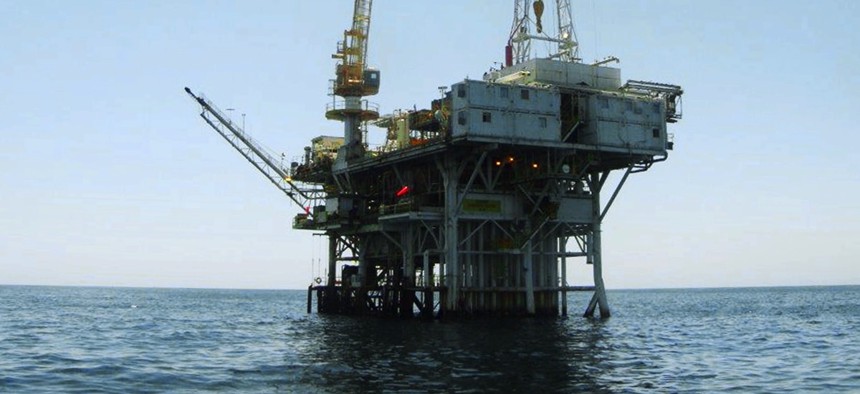Uncertainty Around Infrastructure Permitting Cited as a Difficulty for the Energy Sector

State Lands Commission via AP Photo
In an address, American Petroleum Institute President and CEO Jack Gerard also praised the Trump administration’s recent decision to expand offshore drilling on the outer continental shelf.
WASHINGTON — The president and CEO of the American Petroleum Institute on Tuesday called for greater certainty in government permitting, particularly in states where oil and natural gas infrastructure remains scarce, in his 2018 State of American Energy address.
Jack Gerard, speaking at the Ronald Reagan Building and International Trade Center, said that permitting is a state or federal issue depending on what energy infrastructure is being built and that the Federal Energy Regulatory Commission is currently doing work in 38 states.
The trouble, according to Gerard, is that states like New York have policies that are “too flexible” in that they deter oil and gas infrastructure development after regulators have already weighed in. “Once the decision is made, the process should move forward,” said Gerard, who is often considered to be the oil industry’s most influential and powerful voice in the nation’s capital.
“If people intend to use the system to accomplish other means, we believe that’s a bridge too far,” Gerard said during Tuesday’s address.
Streamlining permitting processes could lower New England’s highest-in-the-nation energy costs, as demonstrated by the recent winter bomb cyclone. In no place is energy infrastructure resistance stronger, despite access to natural gas in the Marcellus Shale region, Gerard said.
By comparison, Ohio’s electricity prices held steady and even declined during peak demand, he added.
Gerard praised the Trump administration’s five-year proposal for expanded offshore drilling along the outer continental shelf.
“What you see is a recognition we need to better understand what resources are there and which ones should be developed,” he said.
Planning areas in the Gulf of Mexico haven’t been evaluated in 30 years, Gerard said, but that doesn’t mean drilling will suddenly begin around OCS states like Florida, where it hasn’t historically occurred. The OCS Lands Act requires consultation with governors, so the proposal represents “the first step in a long process,” he said.
The proposal further shows faith in new industry technologies capable of safer extraction of energy resources, Gerard said. Energy-related carbon emissions have fallen in 43 states in the last decade, the industry having invested $90 billion on new low- and zero-carbon emitting tech between 2000 and 2014—“second only to the federal government” at $110 billion.
President Trump leaving the Paris Agreement was a missed opportunity to talk about the U.S. oil and gas industry’s achievements in helping build a cleaner global economy, Gerard said.
“We need to get out of the conversation about who believes and who doesn’t believe [in climate change] and get to the conversation about solutions,” he added.
As for Trump’s forthcoming infrastructure package, API wants energy infrastructure included with $1.1 trillion in private sector investment available.
“We’re not looking for a government program,” Gerard said.
Changing demographics are also promising, he said, with high-paying oil and gas careers increasing outside of traditional oil states like Texas, Oklahoma and Colorado. Pennsylvania and North Dakota, now the No. 2 oil producer in the country, are also benefiting.
“No one would’ve predicted this 10 years ago,” Gerard said. “But today it’s a reality.”
Dave Nyczepir is a News Editor at Government Executive’s Route Fifty and is based in Washington, D.C.
NEXT STORY: Class-Action Lawsuits Could Pressure Utilities to Update Practices Following Wildfires






